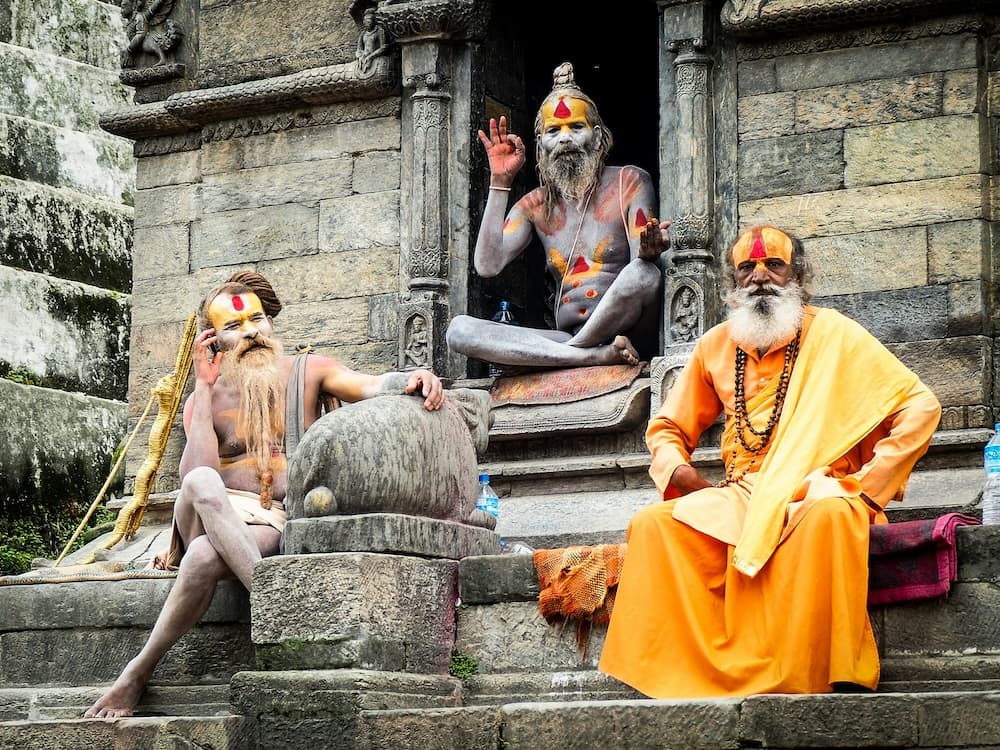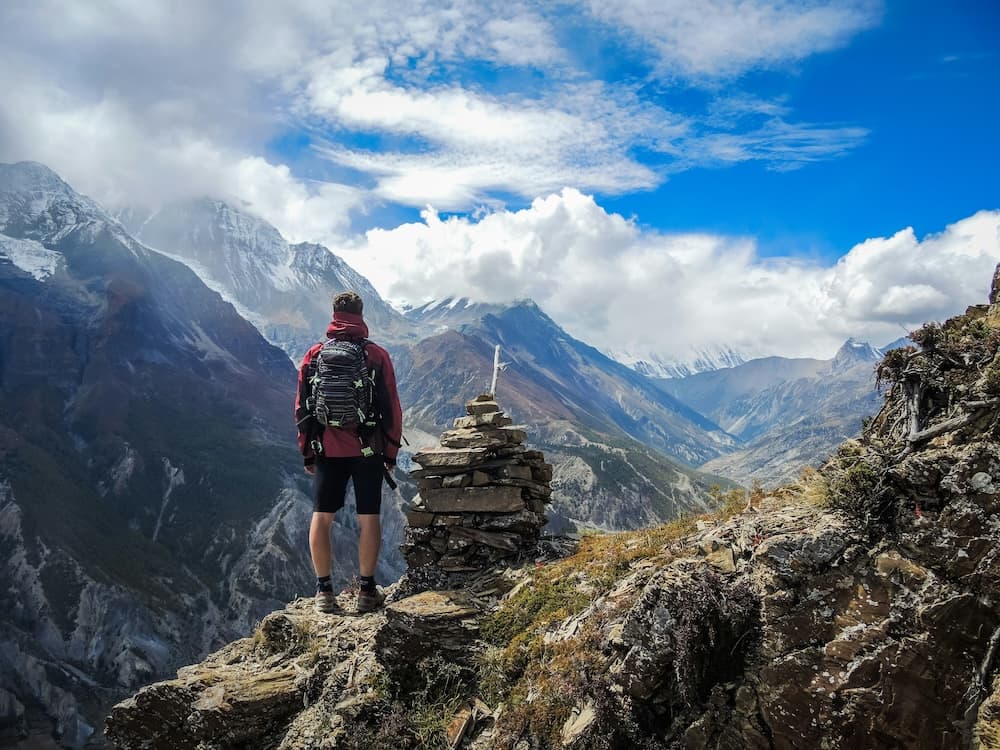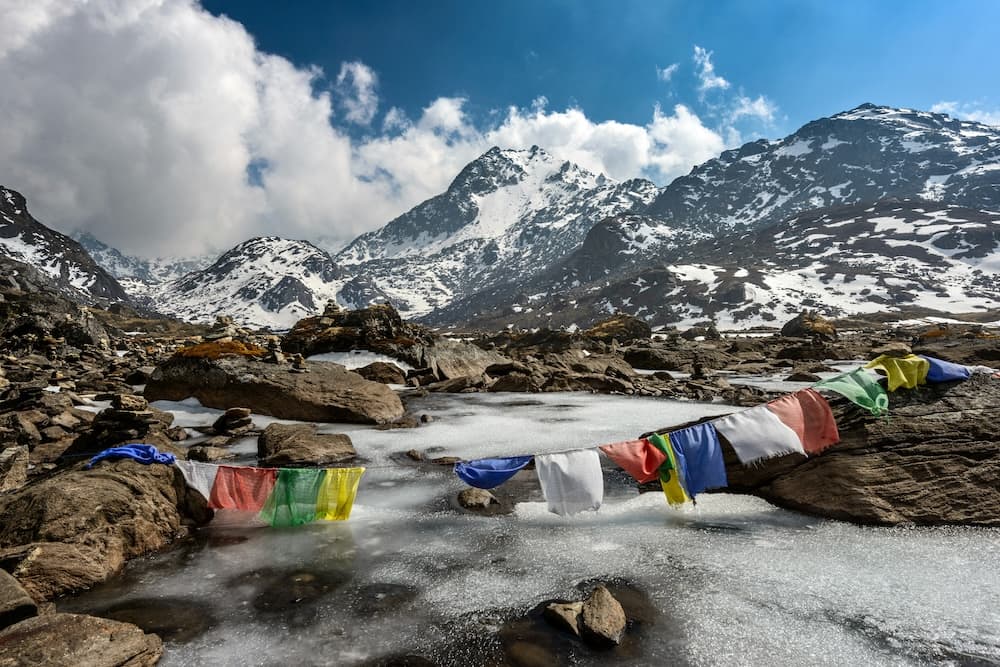A pilgrimage through Nepal: from the Himalayas to the Heart
Nepal has a long history dating back to before the beginning of the Christian era and is also the birthplace of the Buddha. In Nepal, spirituality is inseparable from daily life. Everywhere you
will find monasteries, temples, holy rivers, and colorful Saddhus.
Nepal is therefore a perfect travel destination if you are interested in
meditation, yoga, Buddhism, and the deeper meaning of life.
Much of Nepal is mountainous and surrounded by the sacred Himalayan Mountains. Of the fourteen mountains in the world above 8,000 meters (26246 ft), eight are in Nepal, including the world's highest mountain, Mount Everest, which lies on the border with Tibet.
Experience the Silence of the Himalayas
The Himalayas are known as one of the most breathtaking and spiritual
places on earth. Its majestic mountains, deep valleys and ancient
traditions attract thousands of pilgrims to this part of the world every
year. Located in the heart of the Himalayas, Nepal is therefor a popular
destination for spiritual journeys and pilgrimages.
Pilgrimage in
the Himalayas is much more than just a journey to a physical
destination. It is an inner journey, where the pilgrim seeks spiritual
enlightenment and personal growth. The remote monasteries, sacred
temples and beautiful natural settings offer an atmosphere of peace,
reflection and contemplation. Walking pilgrim paths and performing
rituals can have a profound impact on the spirit and soul of the
pilgrim.
Nepal is truly one of those countries that you must explore on foot. Individually, or with a group of like-minded people on a group tour.
What is the best or most beautiful trekking in Nepal?
There are many beautiful multi-day treks in the Himalayas. The Ghorepani and the Jomson trek are world-famous treks, but the most popular treks in Nepal are the Annapurna Circuit and the Everest Trek. However there are beautiful trekking routes all over the country, which do not necessarily to dizzying heights, but which allow you to get to know the most beautiful hiking areas of Nepal.
Many believe the annupurna circuit is one of the best hikes. This route takes you through breathtaking mountain landscapes, past a pilgrimage town, a 5400-meter (17716 ft) high pass, one of the deepest gorges, hot springs and beautiful views. From the base camp it is also possible to climb further to the summit, but that is only for real climbers. The Annapurna can be reached from the city of Pokhara.
Mysterious Rituals and Stay in a Tibetan-Buddhist Monastery
Get to know mysterious rituals and unique shrines. In Nepal, you can visit Lumbini, the birthplace of Buddha, and stay in a Tibetan-Buddhist monastery. Of course, you will experience the chanting of the mantra and the drumming of the monks in the big temple at dawn. Or take idyllic walks enjoying clear skies and views of the Himalayas.
Nepal has many caste/ethnic groups including the Chhetri, the Brahmins, the Magar, the Tharu, the Tamang, and the Newah. Among the Tibetan groups in northern Nepal are the Sherpas, known as guides and porters in mountaineering. Because of the great differences in altitude, the country has many diverse climatic regions, from a high-mountain climate in the Himalayas to a subtropical climate along the border with India.
Best time to visit
The periods from October to November (autumn) and mid-February to May (spring) are often regarded as the best time to visit Nepal. After the monsoon, the skies clear up, causing pleasant temperatures and spectacular views. In March and April, southern Nepal generally enjoys spring-like to summer conditions, with temperatures ranging from 22°C to 30°C. This period is characterized by minimal rainfall and high amounts of sunshine.
Tourist numbers become less during the winter months from December to mid-February, but pick up again from mid-February through May. From mid-June to early October, the monsoon season sets in, bringing daily rainfall and obscuring most of the Himalayas behind thick clouds.
During the monsoon, some regions of the country become inaccessible due to flooding. Mountain trails turn slippery in the persistent rain, and it's not uncommon for travelers to navigate through swollen rivers and flooded rice fields.
In this article, we have also created a possible itinerary if you have two weeks. If you would have a month we would include the annupurna circuit which takes between 12 to 21 days to complete.
Itinerary for a 2-week spiritual journey through Nepal
Day 1-2: Arrival in Kathmandu
Day 1: Arrive in Kathmandu, the capital of Nepal. Rest from the flight and explore Thamel, the tourist heart of the city.
Day 2: Visit Swayambhunath (the Monkey Temple) and Boudhanath Stupa, two of the most important Buddhist shrines in Nepal. In the evening, meditate at Kopan Monaster. This is a well-known Tibetan Buddhist monastery offering courses and retreats.
Day 3-4: Go to Lumbini
Day 3: Travel to Lumbini (by flight or long drive), the birthplace of Buddha.
Day 4: Explore the sacred garden of Lumbini, the Maya Devi Temple, and several monasteries. Participate in a meditation session at one of the many Buddhist monasteries.
Day 5-7: Go to Pokhara
Day 5: Travel to Pokhara (6-7 hour drive or short flight). Relax at Phewa Lake.
Day 6: Start the day with yoga at the lake. Visit the World Peace Pagoda and enjoy panoramic views of the Himalayas.
Day 7: Explore Sarangkot for a sunrise over the mountains, followed by a day of relaxation and meditation at a local ashram or retreat center.
Day 8-10: Chitwan National Park
Day 8: Travel to Chitwan National Park (5-6 hour drive).
Day 9: Explore the park with a long hike. Discover the amazing biodiversity of Nepal.
Day 10: Join a nature tour and enjoy a peaceful evening with yoga.
Day 11-14: Kathmandu Valley
Day 11: Travel back to the Kathmandu Valley and stay in Patan or Bhaktapur, cities known for their rich culture and heritage.
Day 12: Explore the Patan Durbar Square and enjoy the nice atmosphere.
Day 13: Visit Bhaktapur Durbar Square and experience traditional Newari food. In the evening, meditate in a peaceful setting.
Day 14: Relax and prepare for your return trip. Possibly visit a spa for a relaxing Ayurvedic massage.
Day 15: Departure home